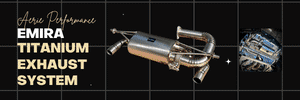EmirOfDenmark
Well-known member
It is loud, very loud in Sport mode. The overrun causes a very loud pop, more of a bang, in the exhaust. I did it the other day in the garage and it scared the life out of everyone (I know, not a very popular move). Only happens on cold start, it doesn’t happen once the engine is warmed up. I wonder why?





